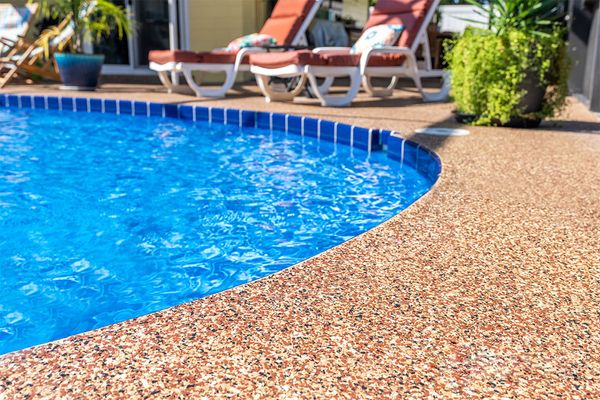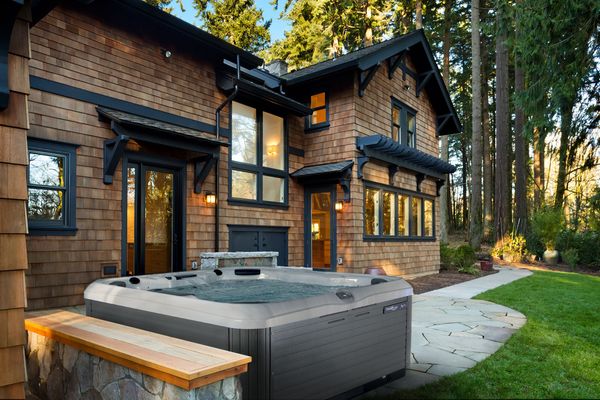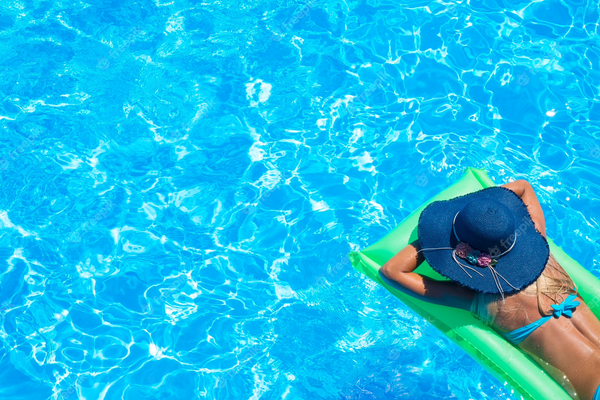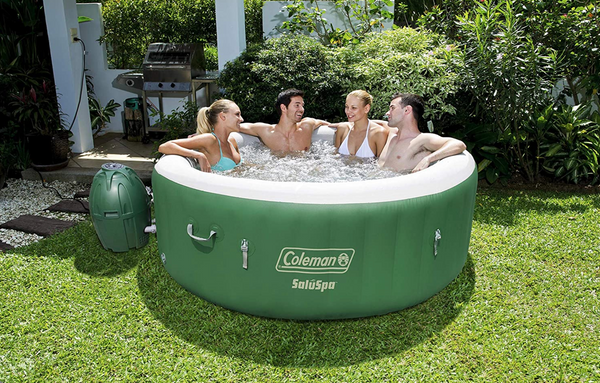When you think of a sparkling summer day, the image of a pristine swimming pool often comes to mind. However, after years of use, even the best-maintained pools need a makeover. This can often be achieved through a process called 'pool resurfacing', an excellent method for restoring your pool's youthful glow. This comprehensive guide will explore how to resurface your pool at home and what you should consider during the process.
Understanding Pool Resurfacing
Pool resurfacing involves replacing the existing finish of your swimming pool. Over time, the surface may degrade due to wear and tear, exposure to chemicals, and the elements. Signs that your pool might need resurfacing include rough texture, discoloration, and leaks. Doing this task at home can be a significant cost-saver, but it's also a complex process. You'll need patience, dedication, and the right materials.
Steps to Resurface Your Pool at Home
1. Drain the Pool
The first step in any resurfacing project is to empty your pool. You can do this with a submersible pump, making sure to properly dispose of the water according to your local regulations.
2. Clean the Pool
Once empty, give your pool a thorough cleaning. This step is essential for identifying any cracks or damage that might need repair.
3. Repair Damage
Inspect your pool carefully for any signs of damage. Small cracks can be filled with a pool repair product. For larger cracks or damage, you might need to call in a professional.
4. Prep the Surface
The existing surface needs to be prepared for the new finish. This involves chipping away the old finish with a jackhammer, then sanding it down to create a smooth, even surface.
5. Apply the New Finish
The type of finish you choose will depend on your budget and aesthetic preferences. Common options include plaster, aggregate finishes, and tile. Each one comes with its specific application method.
6. Refill the Pool
Once your new surface is thoroughly cured, you can refill your pool.
7. Balance Your Pool's Chemistry
After refilling, it's crucial to balance your pool's chemistry. This includes monitoring the pH, alkalinity, and sanitizer levels to ensure your pool is safe for swimming.
Materials Needed for Pool Resurfacing
Several key materials are needed for a pool resurfacing project. These include:
Surface Material
This could be pool plaster, pebble, quartz, or tile, among others.
Application Tools
Depending on your chosen surface material, you might need a plastering trowel, a grout float, or a tile cutter.
Cleaning Tools
This includes a pool vacuum and a stiff-bristled brush.
Safety Gear
Always prioritize safety. Use protective glasses, gloves, and dust masks when handling materials and tools.
Choosing Your Pool Surface Material
When resurfacing your pool, choosing the right surface material is a crucial decision. Here's a brief rundown on some popular options:
Plaster
This is the most traditional pool finish and typically the most affordable. However, it's less durable and requires more maintenance than some other options.
Aggregate Finishes
These combine plaster with small pieces of stones or glass beads for added texture and durability. Aggregate finishes come in a variety of colors and can give your pool a unique, high-end look.
Tile
This is the most expensive option, but it's also the most durable. Tile can last for more than 20 years with proper maintenance and offers a sleek, modern aesthetic.
How to Maintain Your Newly Resurfaced Pool
After you've invested time and money into resurfacing your pool, it's vital to maintain it properly to extend its lifespan. Here are some maintenance tips:
Regular Cleaning
Make sure to skim debris off the surface of the water daily. Vacuum the pool and brush the walls and floor at least once a week.
Balance Chemicals
Regularly test and adjust your pool's chemical balance. Improper balance can harm your pool's surface and make the water unsafe for swimming.
Inspect Regularly
Regularly inspect your pool for signs of damage. Early detection can help you address small issues before they turn into bigger, more expensive problems.
Professional Check-up
Consider having a professional inspect your pool once a year to ensure everything is in order.
Pool Resurfacing Costs
The cost of resurfacing a pool varies depending on the size of your pool and the surface material you choose. DIY resurfacing can save you money, but keep in mind that you'll still need to invest in materials and equipment. On average, homeowners can expect to spend anywhere from $3,000 to $5,000 for a DIY project.
Hiring a professional, on the other hand, will cost more, ranging from $4,000 to $10,000 or more, depending on the complexity of the project and the type of material used.
Other Challenges
For most pool owners, the challenge of resurfacing swimming pools, especially concrete pools, begins with properly preparing the underlying concrete. This crucial step involves stripping away old, damaged materials to ensure a clean and stable foundation for the new material. It is recommended to use a pressure wash to remove any lingering debris, grime, and mineral deposits. This not only cleans the surface but also helps in better adhesion of the new coating. Additionally, using a sump pump can effectively manage any accumulated water, ensuring that the area remains dry and ready for the subsequent steps. This preparation phase is pivotal in the resurfacing process, setting the stage for a smooth and durable finish.
Once the concrete surface is thoroughly prepared, the next step involves the application of new material. For optimal results, many experts suggest using muriatic acid to etch the surface, which helps in creating a better bond between the old concrete and the new resurfacing material. After this treatment, applying a topcoat epoxy can provide a sleek, new finish to your swimming pool. The know-how in mixing and applying these materials is crucial for achieving a professional-grade result. This DIY project requires patience and attention to detail, but with the right approach, it can rejuvenate your pool, making it a centerpiece of your home once again.
In Conclusion
Whether you're tackling a concrete pool square foot or working with fiberglass pools, the decision to resurface your pool is a significant one. Deciding between a fiberglass or concrete pool often boils down to the current state of your pool, your budget, and personal preference. It's essential to remember that both concrete and fiberglass pools each have their unique requirements during the resurfacing process. An entire surface redo may involve concrete repair, applying epoxy paint, or fiberglass pool resurfacing depending on your pool's material.
When it comes to pool resurfacing cost, it's worth noting that pool paint costs are typically lower than fully resurfacing with new concrete or fiberglass. However, a fresh coat of epoxy paint may not address more significant issues like rust stains or underlying structural damage. Furthermore, if you opt for a fiberglass pool resurfacing, remember that this process tends to be more complex and might require hiring pool resurfacing professionals. Therefore, whether you're dealing with a concrete or fiberglass pool, seeking advice from a pool resurfacing professional is often beneficial.
In conclusion, resurfacing a pool is not only an investment in your property's aesthetic appeal but also its longevity. Depending on your pool cost and the chosen method, the resurfacing process can vary in complexity. Hence, always consider your options carefully, and don't hesitate to seek professional advice to ensure the most effective and long-lasting results.






